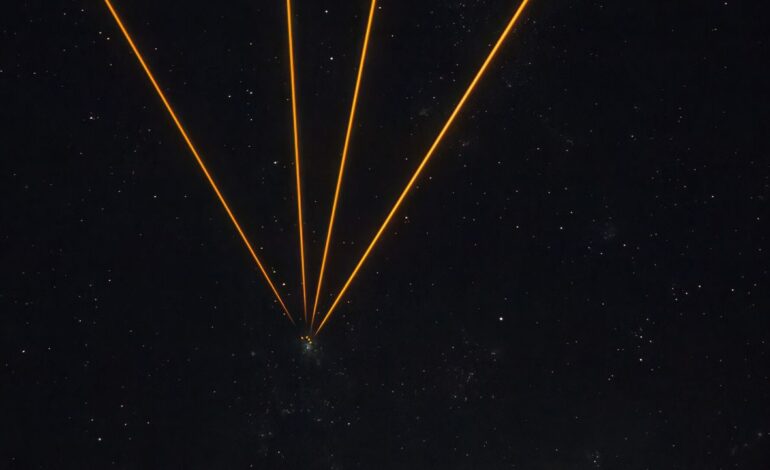Lasers Illuminate Tarantula Nebula with Advanced Telescope Technology

The Very Large Telescope (VLT) in northern Chile has successfully employed its enhanced interferometer, known as the VLTI, to target the Tarantula Nebula with laser beams that create artificial stars. This advancement, part of the telescope’s GRAVITY+ upgrade, enables astronomers to capture sharper and more detailed images of this cosmic region, located approximately 160,000 light-years from Earth.
What is the Very Large Telescope?
Operated by the European Southern Observatory (ESO), the VLT is one of the world’s leading optical observatories, situated in the Atacama Desert. It consists of four 27-foot (8.2-meter) telescopes that can function collectively through the VLTI. This configuration allows the telescopes to combine their light, achieving the resolving power of a much larger instrument. With this capability, astronomers can discern fine details in distant celestial objects, revealing features that are hundreds of times smaller than those visible with a single telescope.
The Role of Lasers in Astronomy
During this recent observation, the VLT directed lasers at a point 90 kilometers above Earth’s surface, generating bright artificial “stars.” These guide stars facilitate a process known as adaptive optics, which corrects for distortions caused by the Earth’s atmosphere. By minimizing natural blurring, the VLTI can produce significantly sharper images.
The focus on the Tarantula Nebula is particularly noteworthy. This nebula resides within the Large Magellanic Cloud, a satellite galaxy of the Milky Way. It serves as a cosmic nursery for some of the most massive and luminous stars in the universe. By studying this nebula, scientists aim to understand the formation and evolution of massive stars and how their intense radiation and stellar winds influence their interstellar surroundings.
The GRAVITY+ system enhancement is pivotal for advancing astronomical research. By providing better precision and sensitivity, it allows researchers to delve deeper into the processes that govern star formation and the dynamics of cosmic environments.
For those interested in learning more, further information about the Large Magellanic Cloud and the capabilities of ground-based telescopes is available through various scientific resources. The ongoing work at the VLT represents a significant leap forward in our understanding of the universe.






